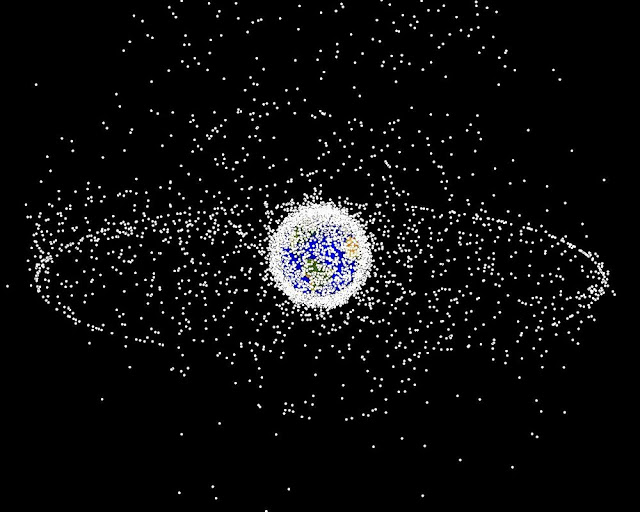 |
| The Growing Threat of Space Debris to Earth's Protective Layers |
As the number of satellites orbiting Earth rapidly increases, experts are concerned about the impact of space debris on the planet's magnetic field and atmosphere.
- Current estimates indicate nearly 10,000 active satellites, with plans for tens of thousands more in the next few decades.
- Jonathan McDowell from Harvard-Smithsonian Center for Astrophysics predicts 100,000 satellites within 10 to 15 years.
- Increased satellite launches result in significant space debris, including defunct rockets and satellites.
Potential Impact on Earth’s Magnetic Field and Ionosphere:
- Metallic debris influx could disrupt the ionosphere and magnetosphere, critical for protecting Earth's atmosphere and life.
- The ionosphere (48-965 km above Earth) is ionized by solar radiation, creating a charged particle layer that reflects radio waves and absorbs harmful UV radiation.
- The magnetosphere, a plasma cocoon, shields Earth from harmful space particles and radiation.
Scale of the Problem:
- Current estimates suggest annual metallic debris in the ionosphere equals multiple Eiffel Towers' worth.
- Unlike meteorites, space debris is large, mainly aluminum and highly conductive.
- Accumulation of conductive materials could trap or deflect Earth's magnetic field, potentially causing regional perturbations and ozone layer holes.
Lack of Comprehensive Studies:
- Despite risks, there is a lack of comprehensive studies on space pollution's impact on the magnetosphere and ionosphere.
- Plasma physicist Sierra Solter emphasizes the need for more research to understand satellite debris' consequences on Earth’s plasma environment.
